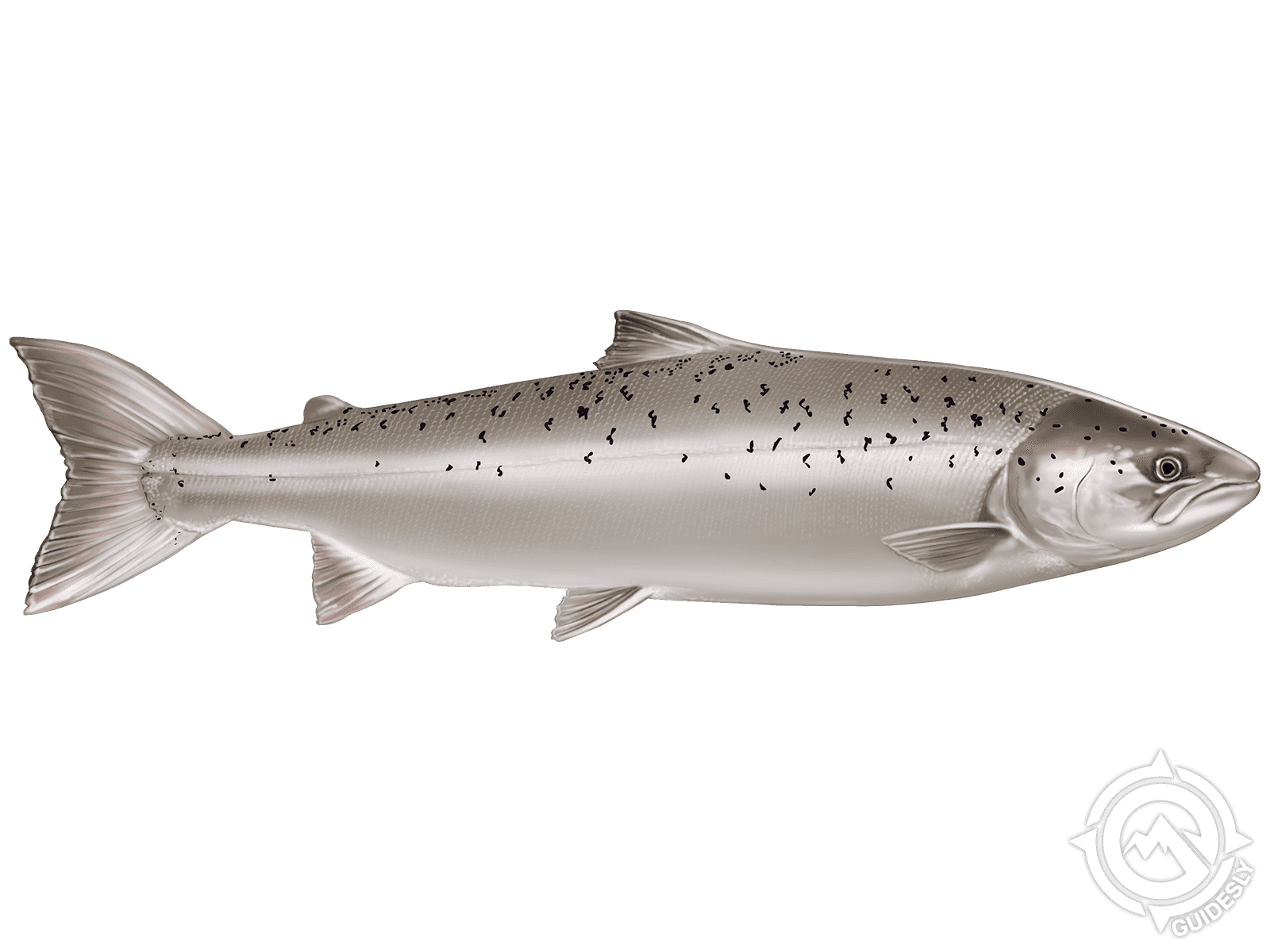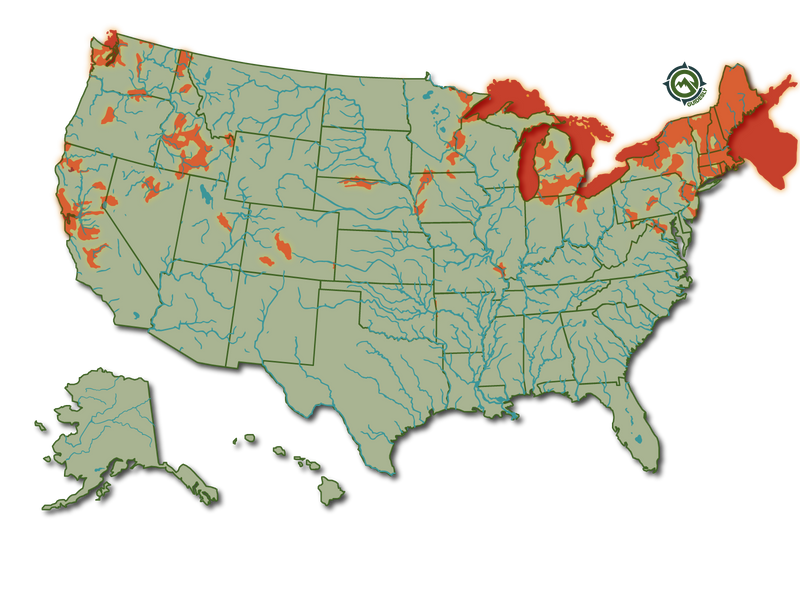Atlantic Salmon

Species Details
Salmo Salar
Salmonidae
Salmoniformes
Onshore, Lake, River
8 - 12 lbs.
24" - 32"
Atlantic Salmon (Salmo Salar)
Description
Atlantic salmon is the only one in the salmon species that exist in the Atlantic Ocean. It is also the second-largest in the salmon species. They have a long and slim body with a forked tail and an almost square tail fin. The head is relatively small compared to the body. When adults enter freshwater to spawn, they turn bronze and the color further darkens after spawning. Returning to the sea brings back the silver body. They are closely related to the Brown Trout.
Size and Weight
Atlantic Salmon grow to an average of 28 to 30 inches and weigh about 8 to 12 pounds.
Interesting Facts
• The Atlantic Salmon is anadromous; they return to freshwater from seawater to spawn.
• Unlike their Pacific cousins, this fish can breed more than one time in life.
• Wild salmon is a well-known delicacy, fetching top dollar. A salmon fillet is orange or pink meat with a high nutritional value.
• Smoltification occurs in juvenile Atlantic salmon. It physiologically prepares them to live in both fresh water and salt water marine habitats. During this time, they also create a homing beacon to help them return to the spawning site.
• Atlantic salmon live 4 to 6 years.
Habitat and Distribution
Young Atlantic Salmon are born and spawn in freshwater bodies such as streams, rivers, and lakes. They will stay there 2 to 3 years before migrating towards estuaries and finally into the Atlantic Ocean where they spend 2-3 years feeding, growing before returning to their birth water to spawn.

In the United States, Atlantic salmon were once native to almost every river and stream north of the Hudson River. Because of habitat destruction and overfishing, most populations in New England sadly have been eradicated. Now, the only native populations of Atlantic salmon in the United States are found in Maine and great lengths are being made to save and populate them.
Spawning
Spawning occurs from November to January, and the younglings hatch in April. The fish usually spawn at night, at pool ends or gravelly bottoms. After laying the eggs, the male fertilizes them and the eggs are covered by females. Atlantic salmon do not die after reproducing just once. They can repeat this cycle several times.
Juvenile Atlantic salmon feed on insects and amphipods. While at sea, adult Atlantic salmon prey on herring, alewife, rainbow smelt, capelin, mummichogs, sand lances, flatfish and small Atlantic mackerel.
Fishing Techniques - How to Catch Atlantic Salmon
Salmon fishing is the highlight of many sportfishermen and consider this to be the king of fish because of their great leaping abilities and fight once hooked. One of the oldest and still most popular technique for salmon as well as steelhead is using a technique called swing. The lure is placed in a downstream at 45 degrees and then let the fly swing in the current.
The fly choice depends upon the condition of the water. Always use the flies with a color similar to the watercolor. In cold days use big flies and don't forget the black color flies at home.
Atlantic Salmon are significantly below their target population levels. In the United States, Atlantic Salmon fishing both commercial and recreational is labeled endangered and its fishing is currently prohibited.







